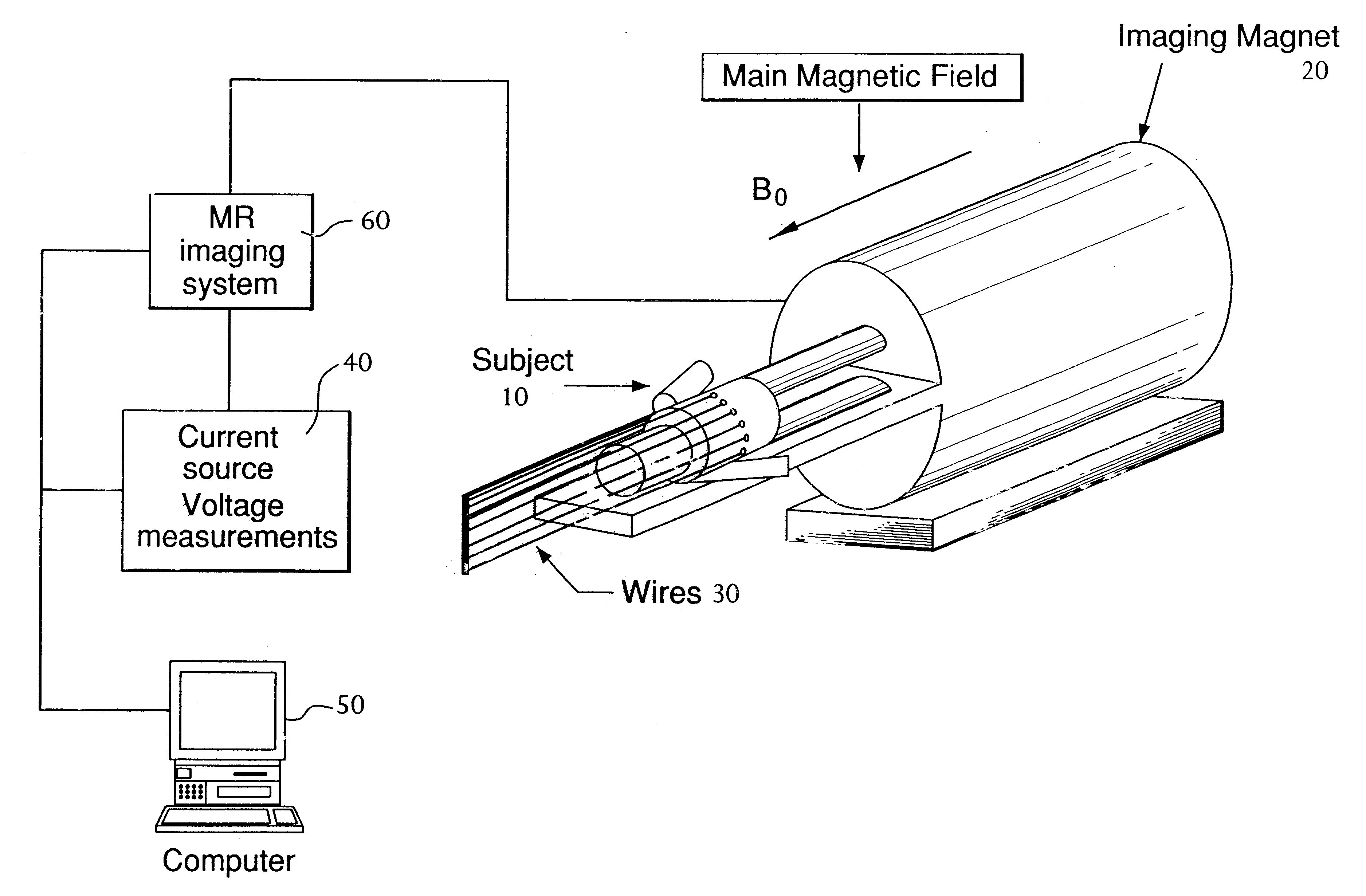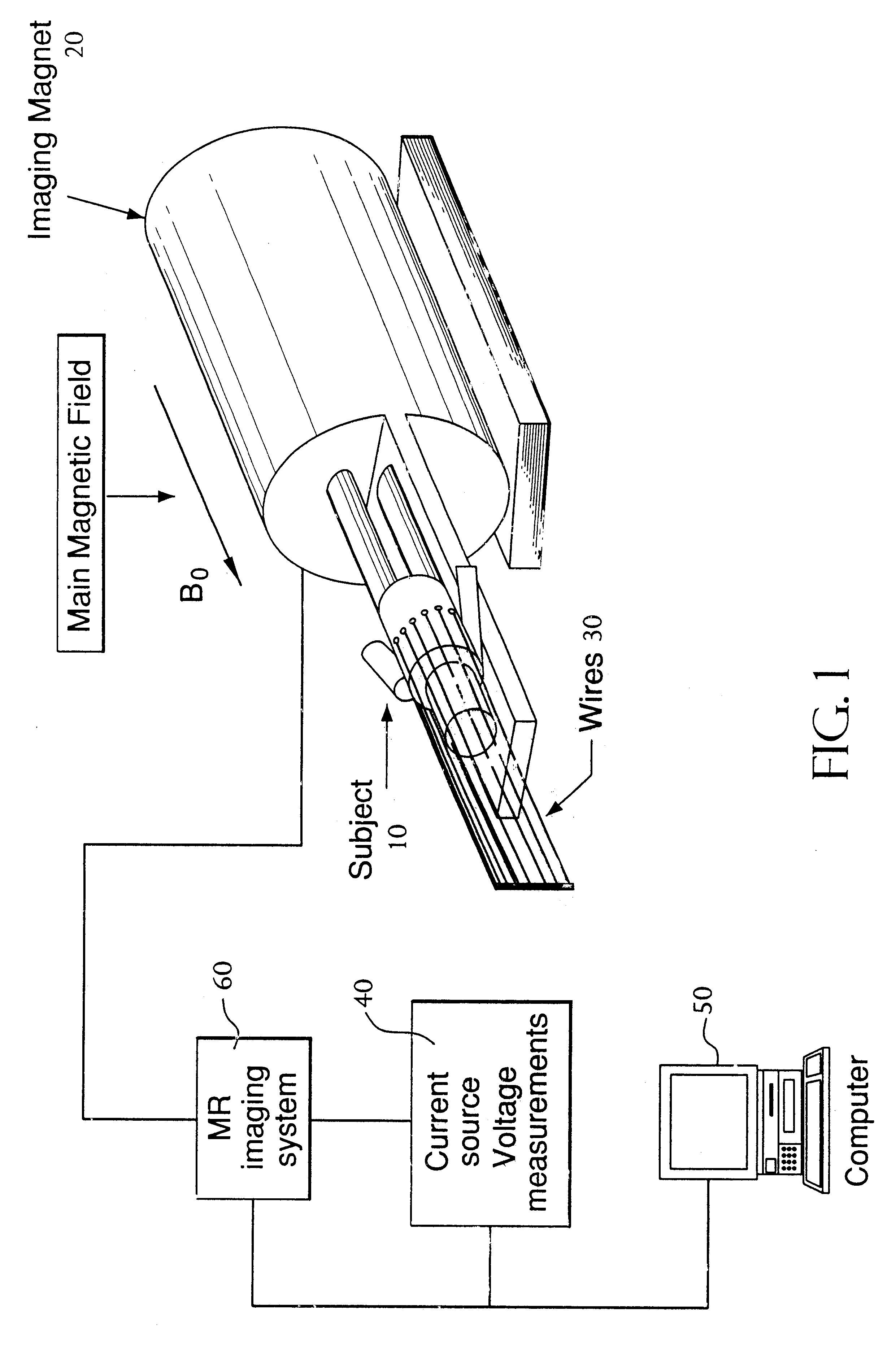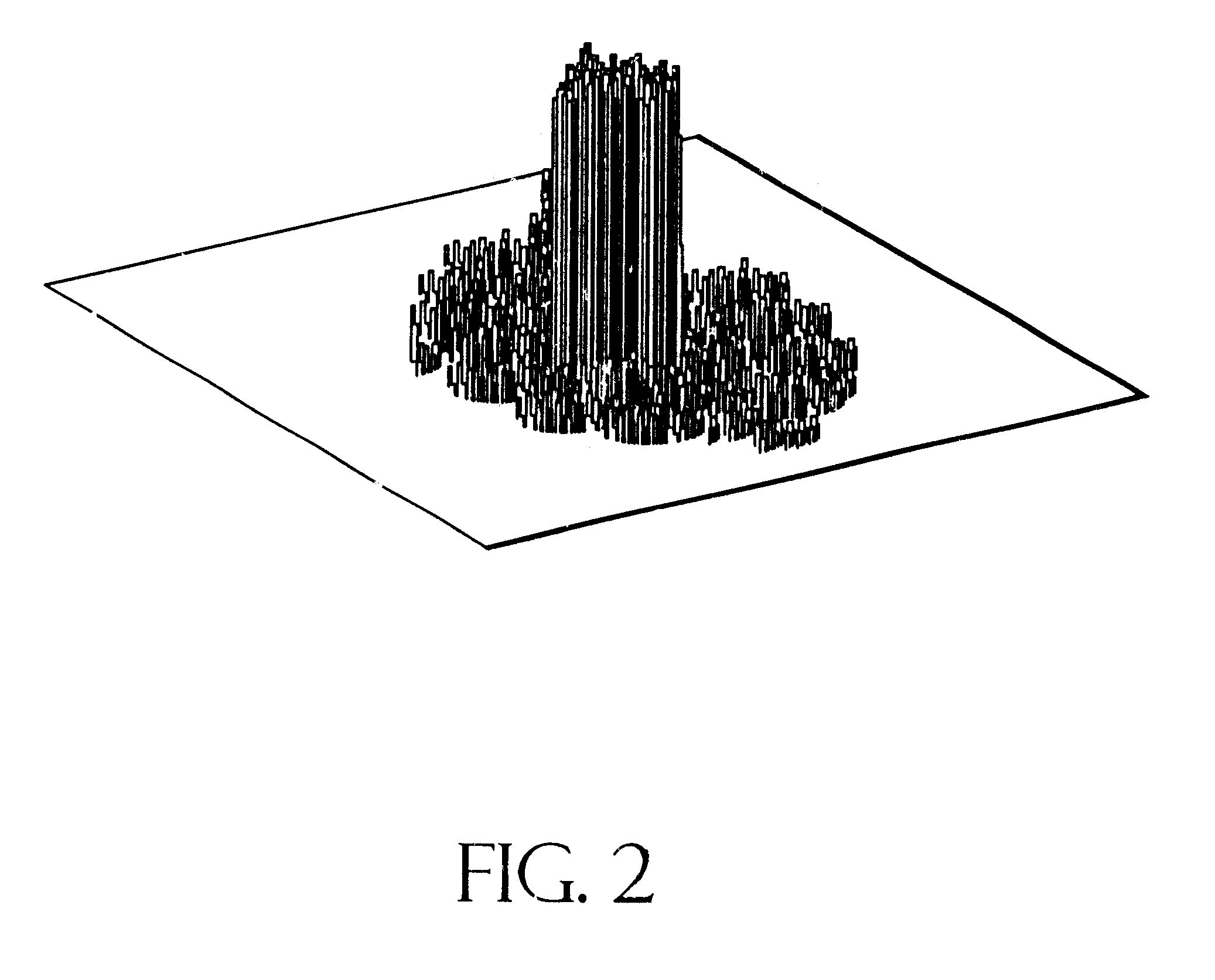Magnetic resonance-electrical impedance tomography
a technology of magnetic resonance and impedance tomography, applied in the field of magnetic resonanceelectrical impedance tomography, can solve the problems of large variability of images between subjects, low spatial resolution, and significant contrast between normal and pathological tissu
- Summary
- Abstract
- Description
- Claims
- Application Information
AI Technical Summary
Problems solved by technology
Method used
Image
Examples
Embodiment Construction
A preferred embodiment of the invention will now be described in detail with reference to FIGS. 1-3. Those skilled in the art will appreciate that the description given herein with respect to those figures is for exemplary purposes only and is not intended in any way to limit the scope of the invention. All questions regarding the scope of the invention may be resolved by referring to the appended claims.
Through combining Magnetic Resonance Current Density Imaging (MRCDI) and Electrical Impedance Tomography (EIT) for the first time, a new imaging technique called Magnetic Resonance-Electrical Impedance Tomography (MR-EIT) has been developed. MR-EIT is set up by positioning an array of electrodes along the surface of the object under study (e.g., on the skin of a human subject). As shown in FIG. 1, the object 10 is then placed in the middle of the strong magnetic field B.sub.0 generated by a Magnetic Resonance Imaging (MRI) magnet 20. All wires 30 connected to these electrodes are sh...
PUM
 Login to View More
Login to View More Abstract
Description
Claims
Application Information
 Login to View More
Login to View More - R&D
- Intellectual Property
- Life Sciences
- Materials
- Tech Scout
- Unparalleled Data Quality
- Higher Quality Content
- 60% Fewer Hallucinations
Browse by: Latest US Patents, China's latest patents, Technical Efficacy Thesaurus, Application Domain, Technology Topic, Popular Technical Reports.
© 2025 PatSnap. All rights reserved.Legal|Privacy policy|Modern Slavery Act Transparency Statement|Sitemap|About US| Contact US: help@patsnap.com



